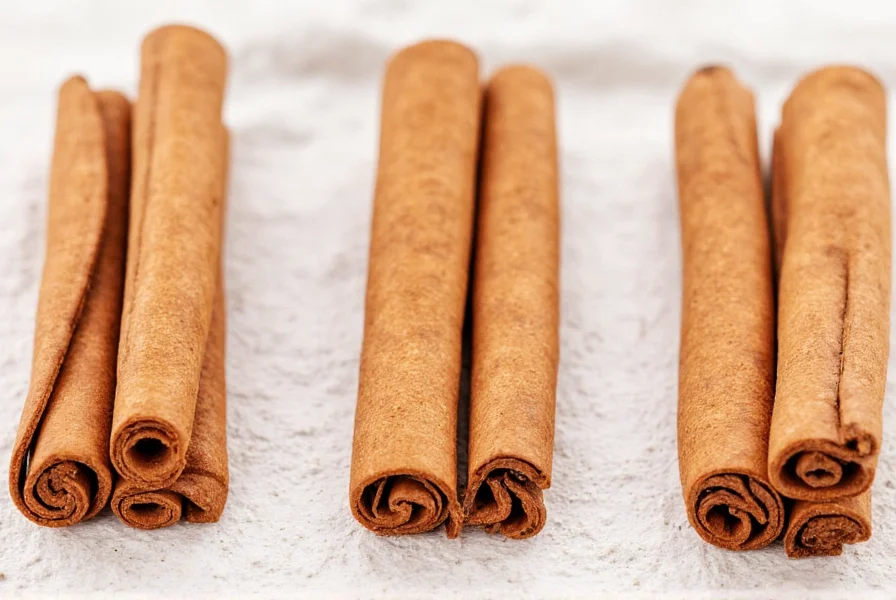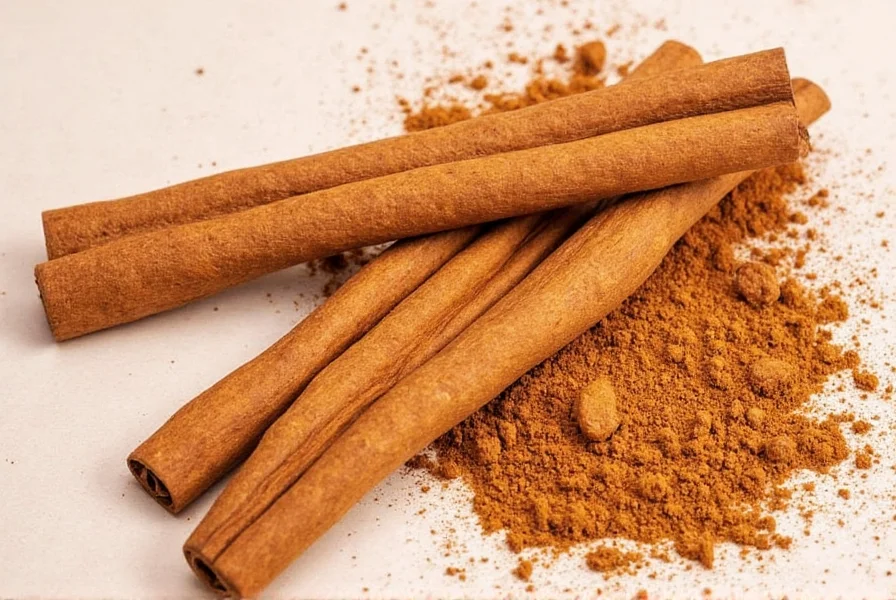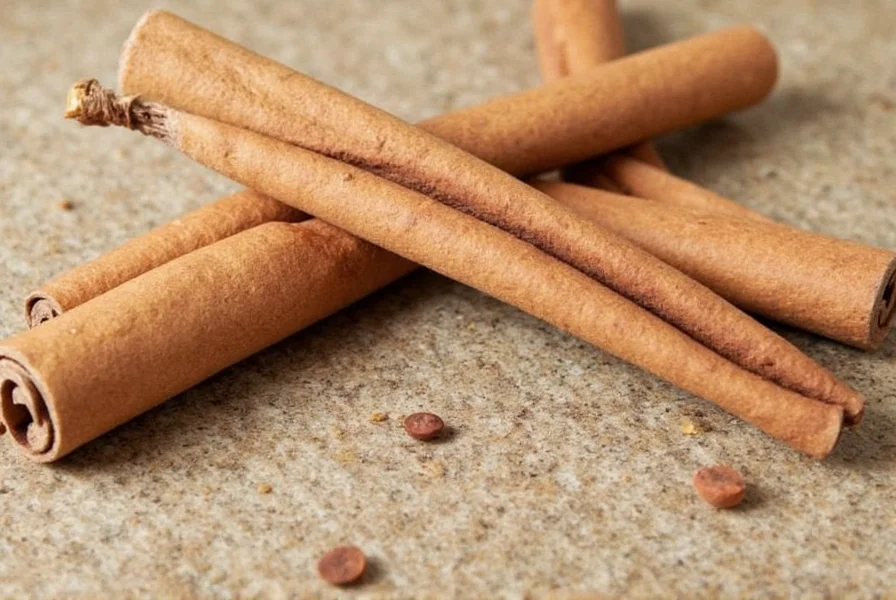Introduction to Cinnamon Tree Bark
You've probably sprinkled it on your oatmeal or stirred it into a mug of apple cider. But have you ever paused to wonder what cinnamon really is? Spoiler: it starts as tree bark.
The cinnamon tree bark comes from the inner layer of trees in the Cinnamomum genus. Once harvested, this bark curls into those iconic cinnamon sticks we all recognize. It's been used for thousands of years—not just for flavor but also for medicine, embalming, and even religious rituals.
Whether you're a curious foodie or a seasoned chef, this guide will take you through everything you need to know about cinnamon bark—its origins, uses, benefits, and how to choose the best quality at the store.
Types of Cinnamon: What You Need to Know
Not all cinnamon is created equal! There are two main types of cinnamon found around the world, each with its own unique characteristics:
- Ceylon Cinnamon (True Cinnamon): Also known as "real" cinnamon, this type comes mainly from Sri Lanka. It's lighter in color, more delicate in flavor, and has less coumarin (a compound that can be harmful in large amounts).
- Cassia Cinnamon: This is the most common type sold in supermarkets, especially in the U.S. It comes from China and Indonesia and has a stronger, spicier flavor. Cassia contains higher levels of coumarin, so moderation is key if you consume it regularly.
| Type | Origin | Flavor Profile | Coumarin Level | Best For |
|---|---|---|---|---|
| Ceylon | Sri Lanka | Mild, sweet, citrusy | Low | Baking, desserts, health-focused use |
| Cassia | China, Indonesia | Strong, spicy, earthy | High | Cooking, savory dishes, budget-friendly spice racks |
Pro tip: Look for the label "Ceylon" when shopping if you want a milder, purer taste and fewer potential health concerns. Otherwise, cassia is great for bold recipes where a punch of spice is exactly what you're after.
A Brief History of Cinnamon: From Ancient Times to Modern Kitchens
Cinnamon isn't just a modern pantry staple—it's got serious historical street cred. Here's a quick walk down memory lane:
- In ancient Egypt, it was used for embalming and religious rituals.
- Roman emperors valued it so much that Emperor Nero supposedly burned a year's supply on his wife's funeral pyre.
- During the Middle Ages, it was one of the most sought-after spices, often worth more than gold!
- It traveled via the Silk Road and became a cornerstone of trade between East and West.
So the next time you toss a stick into your chai, remember—you're part of a long, luxurious legacy.
Health Benefits of Cinnamon Tree Bark
Beyond the kitchen, cinnamon tree bark packs a powerful nutritional punch. Studies suggest it may offer several health benefits:
- Antioxidant Powerhouse: Loaded with polyphenols, which help fight oxidative stress and reduce inflammation.
- Anti-Microbial Properties: Natural compounds like cinnamaldehyde may help fight infections and bacteria.
- Blood Sugar Regulation: Some research shows cinnamon may improve insulin sensitivity—great news for those managing blood sugar levels.
- Heart Health: Regular consumption might help lower cholesterol and triglyceride levels.

Important note: While these benefits are promising, they mostly come from concentrated extracts. So, enjoy your cinnamon stick tea or sprinkle, but don't expect miracles from a single pinch.
How to Use Cinnamon Bark in Cooking
Cinnamon bark can do more than just warm up your morning coffee. Let's explore some creative ways to put it to work:
Classic Comfort Drinks
- Chai Tea: Simmer black tea, milk, water, cardamom, ginger, and a few slices of cinnamon bark for a rich, aromatic brew.
- Hot Apple Cider: Add a cinnamon stick while heating apple juice with cloves and orange peel for that cozy autumn vibe.

Baking Magic
- Cinnamon Rolls: Sprinkle ground cinnamon into the filling, or infuse the cream cheese glaze with a bit of simmered cinnamon bark for extra depth.
- Pumpkin Pie: Enhance the traditional spice mix by adding a tiny piece of cinnamon bark to the pie filling while baking.
Savory Surprises
- Spiced Lentil Soup: Toast a cinnamon stick with cumin and coriander seeds before adding vegetables for an earthy twist.
- Moroccan Tagine: Add a cinnamon stick along with dried apricots, saffron, and ginger for a sweet-and-savory fusion.
Buying Guide: Choosing the Best Cinnamon Tree Bark
When you're shopping for cinnamon bark, not all products are created equal. Here's how to spot the good stuff:
Look for Whole Sticks Over Powder
Whole cinnamon bark (sticks) lasts longer and retains more flavor than pre-ground powder. If you grind your own, you'll get fresher results and avoid possible additives.
Know Your Type
If you want mild flavor and lower coumarin, go for Ceylon. If bold flavor and affordability are your priorities, cassia is your friend. Check labels carefully!
Check for Quality Indicators
- Color: Ceylon should be tan to light brown; cassia will be darker and reddish.
- Texture: High-quality bark is tightly rolled and firm to the touch.
- Aroma: Good cinnamon has a strong, sweet scent. If it smells weak or musty, it's likely old or low quality.
Top Picks for Cinnamon Tree Bark
| Product Name | Features | Advantages | Use Case | Who It's For |
|---|---|---|---|---|
| FreshSpice Ceylon Cinnamon Sticks | Organic, ethically sourced from Sri Lanka | Mild flavor, low coumarin, premium quality | Desserts, herbal teas, smoothies | Health-conscious users, bakers, baristas |
| SpiceTrail Cassia Bark Sticks | Thick, curled pieces from Vietnam | Robust flavor, affordable, ideal for hearty dishes | Stews, curries, holiday baking | Chefs, home cooks, spice lovers |
| EcoNature Ground-Free Cinnamon | Comes in resealable pouch with whole bark | Zero plastic packaging, easy storage | Daily cooking and tea brewing | Eco-conscious consumers, sustainability advocates |
Storage Tips: Keep It Fresh, Keep It Flavorful
Cinnamon bark doesn't spoil easily, but proper storage keeps it tasting amazing for months—or even years.
- Airtight Container: Store sticks in a sealed glass jar or metal tin away from moisture.
- Cool, Dark Place: Avoid sunlight and heat sources like stoves, which can degrade flavor over time.
- Freezing (Optional): To extend shelf life, wrap sticks in parchment paper and store in the freezer—ideal for large bulk purchases.
- Ground vs. Whole: Ground cinnamon loses potency faster than whole sticks. If you grind your own, only process what you'll use within a few weeks.
Fun Facts About Cinnamon Tree Bark
Ready for some trivia to impress your friends?
- Cinnamon trees grow up to 30 feet tall—but only the inner bark is used!
- Harvesting happens every 2–3 years, where workers peel back layers to reach the prized inner bark.
- Cinnamon was once so valuable it was considered a form of currency in some cultures.
- The word "cinnamon" comes from the Hebrew/Aramaic word ammon, referring to the place where it was originally traded.
- Some people believe placing a cinnamon stick in rice keeps bugs away—though there's no scientific proof yet!
Frequently Asked Questions About Cinnamon Tree Bark
What is cinnamon tree bark exactly?
Cinnamon tree bark is the inner layer of trees from the Cinnamomum genus. When harvested, this inner bark is peeled, dried, and curls naturally into the familiar cinnamon sticks. It's not actually the outer bark you might picture when thinking of trees, but rather a specific inner layer that contains all the aromatic compounds that make cinnamon so distinctive.
What's the difference between Ceylon and Cassia cinnamon?
Ceylon cinnamon (often called "true cinnamon") comes primarily from Sri Lanka and has multiple thin layers that form a delicate, hollow tube. It has a lighter color, milder flavor, and significantly lower coumarin content. Cassia cinnamon, which is more common in supermarkets, comes from China and Indonesia, has a thicker, single-layered stick, darker reddish-brown color, stronger flavor, and higher coumarin levels. The taste difference is noticeable—Ceylon is sweeter and more citrusy, while Cassia is more intense and spicy.
Is cinnamon tree bark safe to eat whole?
While cinnamon sticks are technically edible, they're quite hard and fibrous, so they're not meant to be chewed and swallowed whole like a piece of fruit. They're designed to be used as a flavoring agent—simmered in liquids like tea, cider, or stews, then removed before serving. If accidentally swallowed, a small piece likely won't cause harm, but the texture isn't pleasant. For direct consumption, ground cinnamon is the better option.
How can I use cinnamon sticks in cooking beyond just drinks?
Cinnamon sticks add depth to many savory dishes! Try adding one to rice pilaf while cooking, infusing olive oil for salad dressings, or including in braising liquids for meats. They work wonderfully in tomato-based sauces, chili, and even homemade ketchup. For desserts, simmer sticks in custards or puddings, or bury them in sugar to create cinnamon-flavored sugar for baking. Remember to remove the stick before serving most dishes.
How long does cinnamon bark stay fresh?
Properly stored whole cinnamon sticks can maintain their flavor for 3-4 years. Ground cinnamon typically lasts about 1-2 years before losing potency. The key to longevity is storing in an airtight container away from light, heat, and moisture. To test if your cinnamon is still fresh, crush a small piece between your fingers—fresh cinnamon should release a strong, sweet aroma immediately.
Can I grow my own cinnamon tree?
Yes, but it's not practical for most home gardeners. Cinnamon trees (Cinnamomum verum) require tropical conditions—consistent warmth (70-90°F), high humidity, and plenty of rainfall. They grow slowly and won't produce harvestable bark until they're at least 2 years old. Indoor growers in non-tropical climates can try growing them as ornamental plants, but the bark won't develop the same flavor compounds without ideal conditions. For most people, buying quality cinnamon sticks is more practical than growing your own.
Why does my cinnamon stick look different from what I've seen before?
This is likely due to the type of cinnamon you have. Ceylon cinnamon forms multiple thin layers that create a delicate, almost "quill-like" structure with a hollow center. Cassia cinnamon typically forms a single, thick, dense roll with a solid or nearly solid center. Ceylon is lighter in color (tan to light brown), while Cassia is darker (reddish-brown). The texture differs too—Ceylon is brittle and easy to break, while Cassia is hard and difficult to crush.
Conclusion: Spice Up Your Life with Cinnamon
From ancient royalty to your morning toast, cinnamon tree bark has traveled quite a journey. Whether you're drawn to its history, health perks, or culinary charm, cinnamon remains one of the world's most beloved spices—and for good reason.
Next time you pick up that stick, remember: you're holding a slice of nature, tradition, and flavor all wrapped into one deliciously curly package. Now go forth and season boldly, wisely, and joyfully!












 浙公网安备
33010002000092号
浙公网安备
33010002000092号 浙B2-20120091-4
浙B2-20120091-4